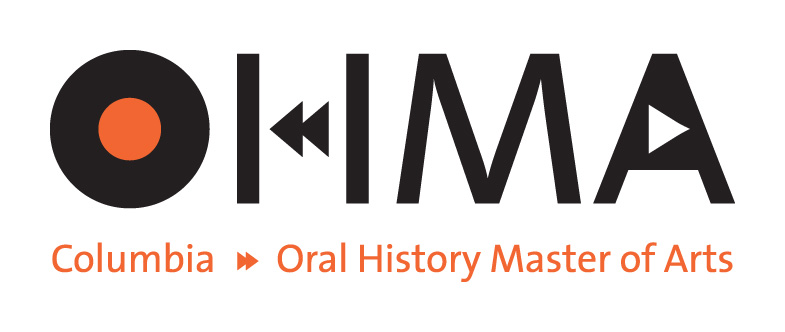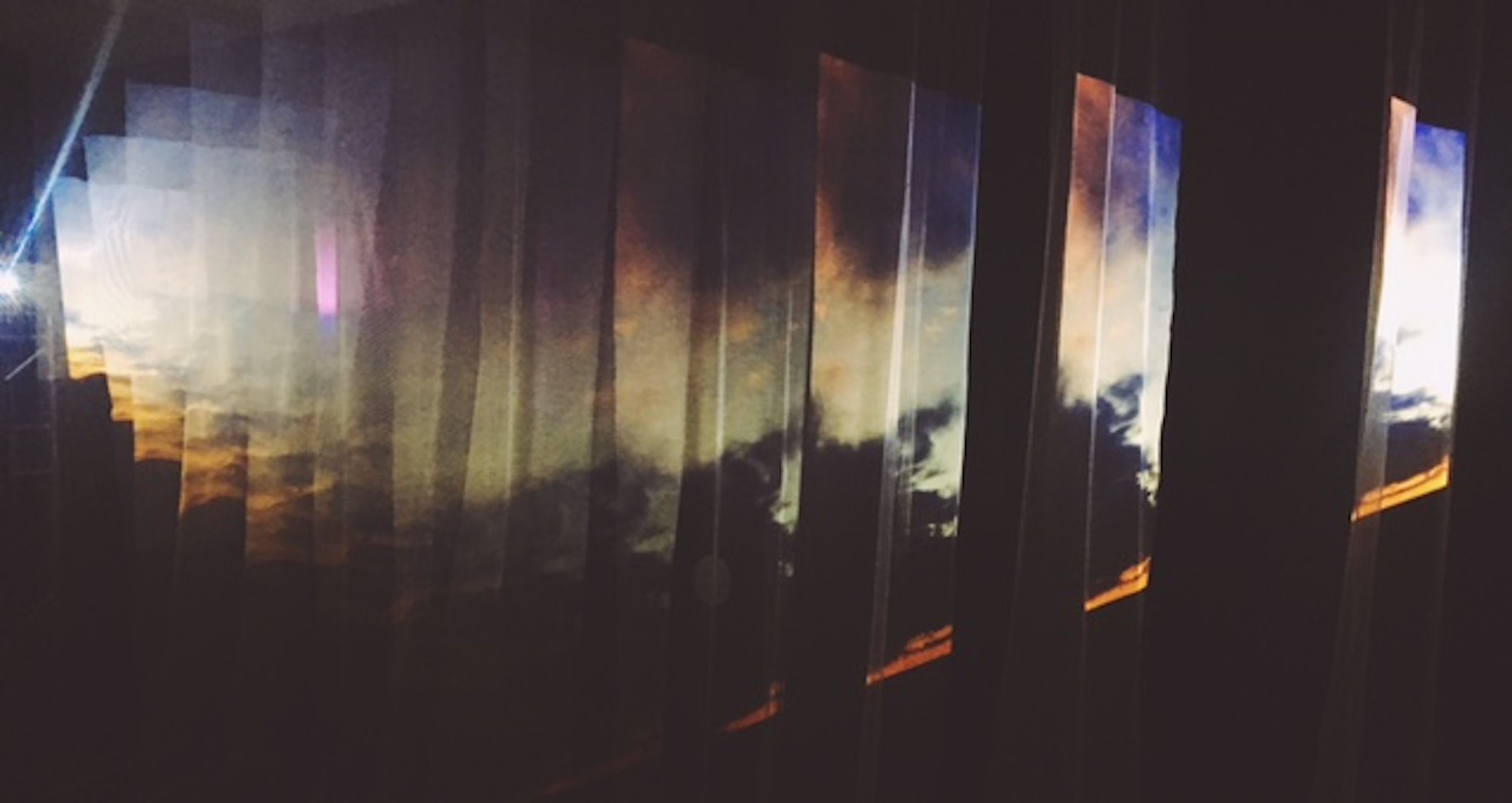Current OHMA student Carlin Zia shares gems from a warm-up conversation with Nyssa Chow ahead of her public presentation, “Writing and Listening for the Intersubjective Encounter,” the second event in our spring Oral History & the Arts lineup.
On Thursday, February 1, the 2017-2018 OHMA cohort got together to talk with our predecessor-turned-mentor Nyssa Chow before her public event in OHMA’s yearlong series on Oral History & the Arts. At several points through our fall semester we had the pleasure and privilege of hearing Nyssa talk about her ongoing project, Still.Life., so we took the opportunity of this pre-workshop conversation to ask Nyssa more holistically about her approach to oral history, writing, and/or storytelling. We embraced the duality of that word “approach” as both framing her current methodology and attitude, as well as encapsulating the quintessential oral history ask “how did you come to…”
She’ll scoff to hear this, but Nyssa’s work and words are the kind that make me want to rush out and LISTEN, MAKE, BATTLE. Hers are not idle wisdoms nor aloof ones. They move. Take a listen and read along:
NC: How did I come to making art? Brh. Do I even make it? I’m still uncomfortable with that term, just because it takes me a long time to clap for myself, so I’m not cheering yet, but it’s getting there. Okay so you’ve heard all these stories, you know where I grew up. [Trinidad.] I didn't learn how to write from books, right, it was all people’s stories. It was gossip and casual metaphor and spontaneous prose anyway and situations that seemed like poetry just in their juxtapositions. And I grew up in the country, where people are very colorful in the way that they go about pretty much everything. Everyone has a nickname; I don’t know anyone’s real name to this day. Even when you go to the funeral half the people there is, “Who’s Jackson So-and-so? His name is Crab.” True story! It’s just the poetry of the world, I guess, that’s the truth, that’s what interests me the most.
How did I get into oral history? I guess thinking that I was going to be “serious,” and I thought that “serious” meant a very particular thing. I had all these ideas: I’d increase my posture, and do Very Important Stuff and write in ways that my friends who are academics write. And I felt like I was failing at it when I couldn’t do it, you know? It just was never my first idea. […] I guess I came to, I’m not going to call it “art” but just being true to myself in a different way, by just kind of being alright, this is the truth. This is really what it is, and now people say it’s art and that’s pretty neat! But I was trying to be “serious,” I really was. I think it’s serious in a different way. […] But I think that [Serious Academic] attitude is still sort of what I struggle to reconcile: What kind of true? What authority am I going to acknowledge in this particular work? Usually it’s my mom, usually it’s my aunties, usually I defer this way. And that’s how I make peace with what I’m doing in a way, and be like, this matters—this matters. And it’s legitimate in that same sense, to me.
We spent some time discussing the provenance of Nyssa’s essay “How to Become a Monster” (look for its publication this spring in Ploughshares, and in the meantime check out OHMA student Desmond Austin-Miller’s reflections on the piece here ), but we soon circled back to reconciliation: of voice and audience, of form and scale, of context and specificity.
Tomoko Kubota-Hiramoto (current OHMA cohort): I think that you have to have something, some kind of feeling that can resonate with others, to describe something. Most of the people don’t know about Trinidad & Tobago; or, when I talk about Japan, people will not understand how I’m feeling, without the knowledge of Japan. How much do I need to direct the audience to the issues that I care about, and how much information do I need to give them? If I give them too much, that will be too journalistic, and fact-based. I’m always puzzled: how much I should tell them?
NC: I still don’t have a clear answer I only have my own, and I think that’s probably the only answer. You have to make a choice. As hard as it sometimes is. You can’t have everything. I tried to, when I first started writing the Still.Life. Write it in a general way; that was my plan. I was going to just lay out the What Happened and the significance of it on a broader scale. But I found that it didn’t, in the same way, it wasn’t the truth. And that truth thing, that’s subjective. For me it wasn’t true to why I really cared. It came down to that. What did I really care about? And I cared about the scale that was there. The decision came down to it was a matter of scale: what was the scale that I was most interested in, where did I think life really happened. And it was in the spaces between things, the little things, the things you can’t quite find language for, the things you need poetry to describe because prose doesn’t always work. That continues to be my preoccupation and that’s what I wanted to write about. And in order to do that I had to get very specific which means that some people were going to get left out. And it wasn’t going to be everything that I could explain.
And I think that’s alright. Because I think as an audience, at least for me I know, I’m willing to travel some distance to find a writer where they are. Not everybody will, but not everybody will anything, you know? I don’t know if that helps, but what’s the most true thing? What would you be most disappointed if you failed to communicate, even if only some people will get that? And can you, if including it means you can’t do the other thing then so be it, and if leaving it out is too big a compromise, then that’s the choice you have to make.
CZ: What do you mean about your willingness to travel a distance, or a longer distance, to somebody? You said to a writer?
NC: Yeah, I mean a couple things. 1) I sent Eula Biss to you: that’s traveling a distance. Meaning it’s not an easy chair, you know? She says okay, you’re going to have to do some work here, I need you to participate with this prose in a much more involved way than if you were going to read something written for the New York Times, which is meant for clarity and is meant for breath. So that’s one way I mean traveling a distance. Some writers need to teach you a language first before you can really understand what they’re writing. I really enjoy that myself; [but] it’s not for everyone. Same thing in film. You have the blockbusters but then you have those ones like I sent you where you have to learn a language to understand it. You have to say okay, I’m here, I’m here to work; because there's something—I’m going to trust that at the end it’s going to pay off. But it can also mean talking across cultures, too. If I have to look things up and research a bit, what does that mean. Everybody got all excited about Junot Diaz, when he didn't translate certain bits, and it worked out fine! You know, we just Googled, or we just, you know, got the sense. And it’s okay, right, it’s okay. I had to travel a bit.
The truth is I am not American. Every time I read a book I have to travel. Most of the world has to travel when they read most of the “great books” that people talk about—I’m always traveling. I don’t live there! So it’s not that much of a reach, right? We’re not inventing the wheel if we from the other side of the world say, “Come hither. Just a tad. Scooch closer to me,” you know? That’s what I mean…
Nyssa’s public talk is full of even more that will make you want to rush out and explore her work, explode your own. You can watch the entire public workshop, “Writing and Listening for the Intersubjective Encounter,” on OHMA’s YouTube channel here.
Carlin comes to OHMA from an English literature background. She brings with her a love of language and narrative and writing, and is excited to be getting up to speed on social science theory and audio/visual mediums. (You can check out her first forays from OHMA’s fall semester Documentary & Visual Storytelling elective here .) Her thesis work is a continuation of a project with her Chinese-born grandfather to record his life story, and in so doing to engage more deliberately with her own Asian\American identity.

